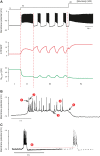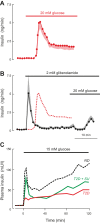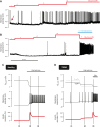Pancreatic β-Cell Electrical Activity and Insulin Secretion: Of Mice and Men
- PMID: 29212789
- PMCID: PMC5866358
- DOI: 10.1152/physrev.00008.2017
Pancreatic β-Cell Electrical Activity and Insulin Secretion: Of Mice and Men
Abstract
The pancreatic β-cell plays a key role in glucose homeostasis by secreting insulin, the only hormone capable of lowering the blood glucose concentration. Impaired insulin secretion results in the chronic hyperglycemia that characterizes type 2 diabetes (T2DM), which currently afflicts >450 million people worldwide. The healthy β-cell acts as a glucose sensor matching its output to the circulating glucose concentration. It does so via metabolically induced changes in electrical activity, which culminate in an increase in the cytoplasmic Ca2+ concentration and initiation of Ca2+-dependent exocytosis of insulin-containing secretory granules. Here, we review recent advances in our understanding of the β-cell transcriptome, electrical activity, and insulin exocytosis. We highlight salient differences between mouse and human β-cells, provide models of how the different ion channels contribute to their electrical activity and insulin secretion, and conclude by discussing how these processes become perturbed in T2DM.
Copyright © 2018 the American Physiological Society.
Figures



























References
-
- Adriaenssens AE, Svendsen B, Lam BY, Yeo GS, Holst JJ, Reimann F, Gribble FM. Transcriptomic profiling of pancreatic alpha, beta and delta cell populations identifies delta cells as a principal target for ghrelin in mouse islets. Diabetologia 59: 2156–2165, 2016. doi:10.1007/s00125-016-4033-1. - DOI - PMC - PubMed
-
- Aguilar-Bryan L, Clement JP IV, Gonzalez G, Kunjilwar K, Babenko A, Bryan J. Toward understanding the assembly and structure of KATP channels. Physiol Rev 78: 227–245, 1998. - PubMed
Publication types
MeSH terms
Substances
Grants and funding
LinkOut - more resources
Full Text Sources
Other Literature Sources
Medical
Miscellaneous

